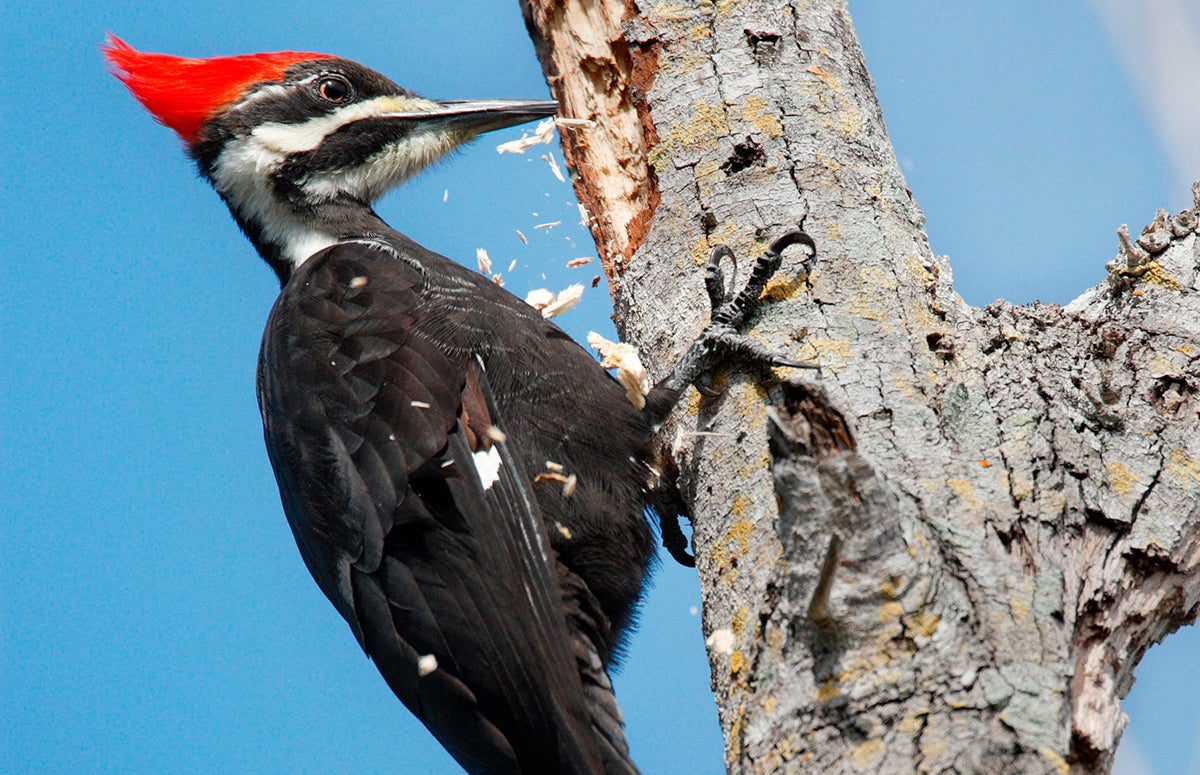Encountering Woodpeckers in Florida: Variety Variety and Identification
Wiki Article
Unveiling the Keys of Woodpeckers: Behavior, Habitat, and More
Woodpeckers, with their special actions and specialized adjustments, have actually lengthy interested researchers and nature fanatics alike. By revealing the secrets bordering woodpeckers' habits and habitat choices, a deeper understanding of these bird marvels arises, using a look right into their interesting globe.Woodpecker Behavior Insights
In examining woodpecker behavior, a fascinating display screen of specialized skills and adaptations emerges, clarifying their remarkable ecological particular niche - Woodpeckers in Florida. Woodpeckers, recognized for their unique drumming on trees, possess a variety of behavior qualities that add to their survival and success in their environment. One crucial habits is their drumming, which serves numerous functions such as communication, developing region, drawing in mates, and situating food resources. This rhythmic pecking additionally showcases their exceptional strength and endurance, as they can hammer away continuously at high rates without triggering harm to themselves.Furthermore, woodpeckers display an unique feeding actions defined by their ability to essence pests from tree bark using their specialized beaks. Their lengthy, barbed tongues aid in catching prey, while their solid neck muscular tissues give security and precision during pecking motions. This feeding approach permits woodpeckers to accessibility concealed insect larvae and remove them with exceptional efficiency.
Habitat Preferences and Choice
What factors affect the habitat preferences and selection of woodpeckers? Woodpeckers are highly adaptable birds known to populate various environments worldwide. They do display preferences for particular habitat features. One important element influencing woodpecker habitat selection is the availability of ideal nesting websites. Woodpeckers normally choose woodlands with a mix of mature trees that offer adequate possibilities for cavity excavation. These dental caries work as crucial nesting and roosting sites for woodpeckers and are vital for their reproducing success.Additionally, woodpeckers reveal a choice for environments with a plentiful supply of food resources. They are mainly insectivorous, eating beetles, ants, larvae, and other bugs found in decaying wood or tree bark. Woodpeckers tend to prefer woody areas with a diverse insect populace to satisfy their dietary needs.
In addition, the visibility of dead or rotting trees is another key variable in woodpecker environment choice. These trees not just give food resources but also offer ideal substrate for cavity excavation. Dead trees are crucial for the upkeep of healthy woodpecker populaces, as they play an important duty in the woodpeckers' life process and environment characteristics.
Feeding Routines and Diet Make-up
Woodpeckers demonstrate a specialized feeding actions concentrated on foraging for insects within numerous habitats. In addition to pests, woodpeckers also take in tree sap, fruits, nuts, and seeds, including variety to their diet regimen depending on the period and availability of food resources.The foraging strategies of woodpeckers are well-adapted to their arboreal lifestyle (Woodpeckers in Florida). Their capability to dig deep into timber not just gives them with food yet also assists in producing nesting dental caries and developing territories. Woodpeckers play a vital duty in keeping the health of forests by controlling insect populations and helping in the decay of wood. Understanding their feeding practices and diet plan structure is necessary for preservation initiatives intended at protecting these special and useful birds.
Drumming Sounds and Communication
Utilizing rapid drumming noises on various surfaces, woodpeckers employ a distinct form of communication to indicate region boundaries and draw in companions. This drumming actions is not just a means of communication yet also acts as a means for woodpeckers to develop their presence within a certain area. The intensity, speed, and pattern of the drumming can communicate vital info to various other woodpeckers around.Woodpeckers utilize drumming noises to announce their existence in an area and to caution off prospective intruders. The loud and repeated nature of the drumming functions as a clear signal to various other woodpeckers that the area i thought about this is currently declared. This helps in reducing problems and reducing physical battles between people.

Survival Adaptations and Specialized Makeup

Conclusion
Finally, woodpeckers show one-of-a-kind actions, such as drumming noises for communication, and have specialized makeup for survival in their picked habitats. Their feeding practices and diet make-up better show their versatility to various environments. By understanding these facets of woodpeckers, scientists and preservationists can much better safeguard and preserve these remarkable birds and their environments.Report this wiki page